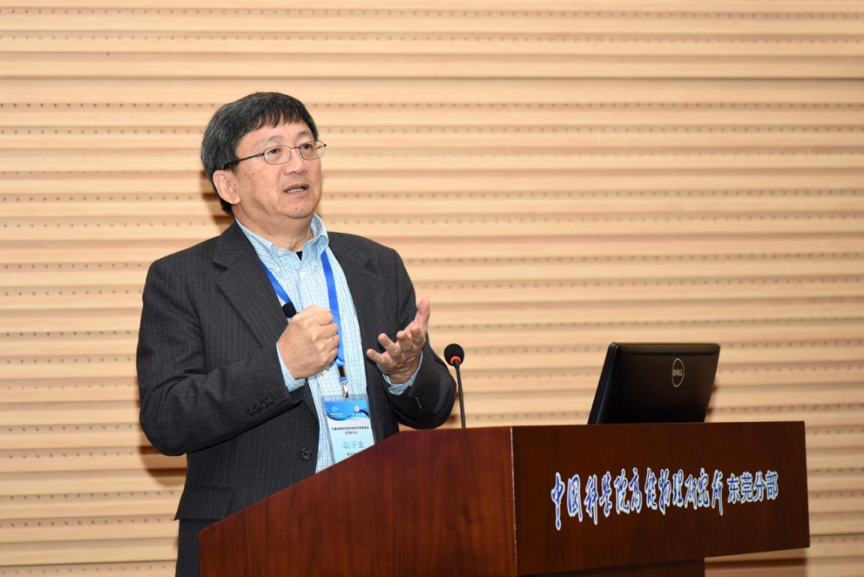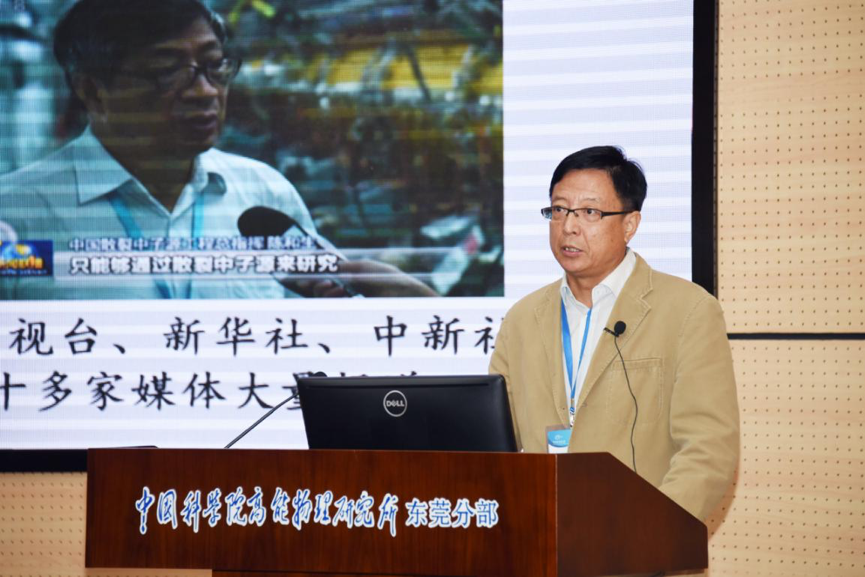Last weekend, Southern University of Science and Technology (SUSTech) and China Spallation Neutron Source (CSNS) collaborated to hold Symposium on Application of Neutron Science and Technology in the Research and Exploit of Natural Gas Hydrate. The symposium was held at China Spallation Neutron Source Park, Dalang Town in nearby Dongguan.
More than 70 experts from all over China attended the symposium, including experts from Chinese Academy of Engineering, Chinese Academy of Sciences, National Natural Science Foundation of China, University of the Chinese Academy of Sciences, Peking University, SUSTech, Shenzhen Municipal Science and Technology Innovation Commission and the Shenzhen Municipal Development and Reform Commission.

Prof. Yusheng Zhao, Director of SUSTech’s Office of Research, gave a presentation about “Application of in-situ high-pressure neutron technology” at the meeting. He detailed the scientific background and development plan for the multi-mode and multi-scale high-pressure seepage comprehensive experimental platform. He also explained the role and significance of the device to solve the important scientific problems in the exploration and development of natural gas hydrate.
He said that the symposium brought together experts in natural gas hydrate and neutron technology to promote interdisciplinary studies. Prof. Zhao expected further exchanges to make good utilize of large scientific devices and application of neutron science and technology in studying natural gas hydrate.

Dr. Yanwei Chen, Researcher Fellow at Chinese Spallation Neutron Source, introduced the planning, construction, commissioning, acceptance and open operation of CSNS. He said that the successful completion of CSNS would greatly promote the future development in materials, physics, life sciences, engineering and other fields in China.
Dr. Duofu Chen, Prof. of Shanghai Ocean University, and Dr. Xiaohui Yu, Associate Research Fellow at Institute of Physics, Chinese Academy of Sciences, and Dr. Dong Feng, Research Fellow at the South China Sea Institute of Oceanology, Chinese Academy of Sciences, and Dr. Junrong Feng at CSNS, shared their research results and had deeply discussions throughout the symposium.
CSNS is a large scientific research platform for high-tech and interdisciplinary applications with international leading level. CSNS was jointly built by Chinese Academy of Sciences and Guangdong Province and is designed for study of neutron properties and detecting the microstructure and motion of materials. It can lead to great progress in physics, chemistry, life sciences, materials science, nanoscience, medicine, and new nuclear energy development.
Proofread ByXia Yingying
Photo By